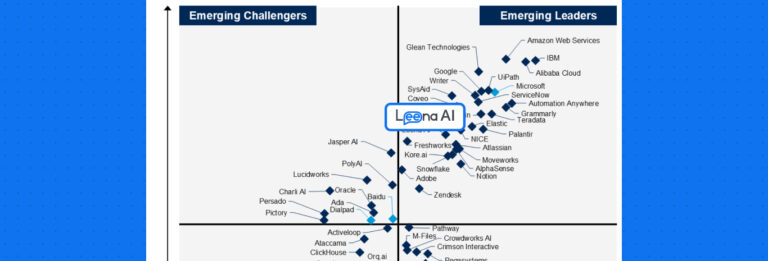Enterprises need a productive and engaged workforce to become successful in the dynamic business landscape. This is only possible when they set the right expectations and processes from the get-go – that is, have a proper employee onboarding strategy.
A robust employee onboarding strategy has proven beneficial to the company and the employee on multiple accounts. It makes an organization’s operations streamlined, facilitating better business outcomes, while the employees benefit from a better understanding of their job roles.
Good onboarding is said to positively impact the employee experience, productivity, and retention rate.
However, even after implementing automation, companies are focused on their benefits. They focus on factors like optimizing resources, reducing onboarding time, etc. But an effective employee onboarding strategy should ideally always focus on the new employees first to see the best results.
To help you achieve the balance, here are some tips, tricks, and onboarding strategies to deliver a delightful employee experience and ensure positive results for the company.
Strategies to deliver a delightful employee experience during onboarding

1. Engage with your new hires before their day 1
Joining a new organization can be nerve-wracking for employees. Preboarding, the stage between accepting the offer letter and the joining day, is the best opportunity for a company to start the onboarding smoothly. It prepares new employees and creates excitement toward their new roles.
A proper preboarding experience shows new hires that you are all set to welcome them instead of overwhelming them with paperwork.
You can do a few things to ease them on their first day: send the documents digitally and request e-signs, ship all the required equipment to give them time for familiarization, and send a video with the respective managers and team to welcome them.
You can also answer all their queries before their joining day so that they can get comfortable in their roles quickly.
The best thing is that you can always automate them with employee onboarding software. This helps streamline the process and improve new hires’ experience.
2. Streamline the documentation process
Onboarding paperwork can exhaust new hires. Mountains of forms only add to their stress of joining a new company, which is detrimental to successful employee onboarding. Ensuring accuracy in paperwork is also crucial to maintaining compliance.
That is why it is necessary to create a streamlined documentation process that requires minimal effort from employees.
For example, you can show spaces in I-9 that require a name, address, etc. Marking the required fields is another extraordinary method, as employees can not submit the form until they fill out every necessary field. This way, you can prevent incomplete paperwork that further needs more attention.
Make a checklist of all necessary documents early on to get all the essential information. You can simplify the process by leveraging an intelligent document management system and automation to collect, process, and methodically categorize documents.
3. Create a first-day checklist
The first day is often overwhelming for new hires. More than the job role one is hired for, the unfamiliar territory and faces often result in running helter-skelter, trying to catch up with everything. A comprehensive checklist for day one can be a game-changer to your employee onboarding strategy.
HR professionals can create a checklist detailing the paperwork that needs to be completed, introductions, and training tasks scheduled for day one and use a document distribution platform to share it with the new hires.
Onboarding measures often look great on paper, but these practices must translate into real-world workflows. Generating new hire checklists is the best way to ensure managers and staff know what to do when employees report for their first work days.
The day-one checklist will help ensure that the HR department follows a standardized procedure with each new hire. Do not forget to customize the list for different departments or teams.
4. Conduct pulse surveys to gauge sentiments
For a successful employee onboarding strategy, constant improvements are necessary — and frequent pulse surveys can be of tremendous help here. Pulse surveys are quick and focused surveys that are easy to conduct frequently and aim to measure different aspects of employee engagement.
A comprehensive pulse survey should follow each milestone in the onboarding journey to collect data on their experience and how they can improve it.
For example, after giving them an overview of your company’s mission and vision, conduct a pulse survey to know what they liked and disliked about the session.
Such an approach allows you to improve your onboarding strategy constantly and accommodate changing employee expectations. When your new employees see you taking their suggestions, they will feel valued and appreciated in their new company.
With Leena AI, you can leverage their automated pulse surveys and sentiment analysis to dig deep into the new hires’ feelings and accurately gauge how they felt about the onboarding. This will give you clear insights for making necessary improvements.
5. Give them a friend to rely on
New hires will naturally find settling on their first day a little challenging. They will have questions, concerns, and doubts that they can not always ask a senior or their managers. The other option is to figure things out independently, which takes time and is prone to mistakes. That could slow down your workflow and make the new hire feel alone and frustrated.
Thus, assign them a work buddy instead of fostering a direct and intimidating touch with the managers. This person must not be a new employee and should have the same seniority level as the new hire. The work buddy will be like their first friend who can make them feel comfortable and help them open up. The work buddy will also regularly check in with new hires. It is an effective way to familiarize your new hires with the culture and mode of operation without intimidating them.
6. Have an employee handbook prepared
A practical employee handbook is a manual that communicates your mission, values, policies, and rules to your new and existing employees. It provides your talent with a thorough introduction to your company, how your operations work, and the guidelines for an employee.
Design a handbook that aligns with the tone of your business. It should be a helpful guide for employees to understand what you expect of them, what they need to do to move forward, where to direct queries, and whom they can reach for help.
Individual departments can have additional specific protocols and methods. However, your employee handbook must reflect uniformity and provide a firm foundation for the workforce.
7. Gamify the onboarding process
A significant part of the employee onboarding strategy revolves around familiarizing the new hires with employee guidelines and company policies. The same old method of presentations, charts, and lectures can get boring for a new arrival.
It is essential to make the onboarding process fun for your employees. Inculcating a data-driven, fun gaming theory in your onboarding tasks will quickly grab the new hires’ attention and allow them to absorb the learning thoroughly.
Include games, quizzes, and prizes in your employee onboarding strategy. Instead of giving them a tour of the office, you can set up a treasure hunt. This will pique their interest in learning about their new workplace and create a fun and welcoming environment.
You can also include other games like two truths, one lie, OMG questions, and scavenger hunts to break the ice and help them mingle with their new colleagues. These are fun and non-intimidating ideas to acclimatize new hires into the new office.
However, conducting these manually can be a near-impossible task. But with effective onboarding software, you can automate most of these games and conduct them online. With hybrid and remote work models on the rise, gamification goes a long way in creating a delightful employee experience.
8. Set up a post-onboarding graduation party
Executing an employee onboarding strategy is not a process you can complete within a week. Usually, it should have a 30-60-90 day structure, but it can last up to a year, based on your onboarding goal. Completing the entire operation is like a new hire completing a milestone and entering a new chapter of their work life.
One of the most crucial elements of employee engagement is celebrating your workforce. Hence, when your new hires complete their onboarding, collect their feedback and celebrate crossing this significant finish line. This will validate their achievement and encourage them to do their jobs better.
9. Give them a platform to raise concerns
Your employee onboarding strategy should include a designated place for employees to raise concerns and ask questions. Without that, they will have to run around finding answers, hampering their productivity.
However, employees may feel intimidated raising concerns in front of a superior or another colleague. Hence, an automated and interactive chatbot can help them record testimonies anonymously.
Leena AI offers a centralized help desk with interactive chatbots to resolve all employee cases on a unified dashboard. It provides a 24/7 virtual assistant for raising and tracking issues, resolves them in minimal time, and offers a smooth employee experience.
10. Localize the onboarding process
The current work culture comprises in-office and remote employees. Many companies are looking for talent outside of their own countries. So, if your teams have global members, localizing all mediums of operations is extremely important for strategic onboarding.
To facilitate that, you need a system where language is no barrier. Leena AI is a multilingual software capable of delivering a personalized onboarding experience to your workforce. Book a demo to know more!
Conclusion

Focus on creating an employee onboarding strategy that boosts employee experience and benefits the company. However, do not make your onboarding about completing a checklist. Instead, focus on making the new hires feel welcome through streamlined and straightforward procedures.
Their early experiences in your company will shape their contribution to your growth. Therefore, use an automated onboarding solution, like Leena AI’s, to transform new employees’ experiences. Leena AI’s multilingual onboarding solution can help your global new hires engage and acclimate in the organization faster and more smoothly.
The AI-driven virtual assistant enables new employees to resolve their queries around policies, leaves, etc., through self-service while liberating HRs from answering repetitive queries. Additionally, the pulse surveys constantly keep a tab on new hires’ onboarding experience and the gaps that HR leaders need to address to provide holistic experiences.
Book a demo today to explore Leena AI’s stellar features and revolutionize your onboarding program for new employees.
FAQs:
What is an onboarding strategy?
The onboarding strategy involves a long-term plan that optimizes the steps and focuses on making an employee’s early days a delightful experience. It builds a foundation for the new hire’s future in the company. A proper onboarding strategy keeps employees engaged, boosts productivity, and improves business outcomes.
Why is onboarding the most crucial part of your growth strategy?
Onboarding is the most critical part of any organization’s growth strategy because it helps employees acclimate to their roles faster, keeping the workflow intact. It familiarizes the employees with the company’s vision and gives them a clear idea of their professional growth. An effective onboarding strategy makes new hires feel included and involved in driving the company’s success.






